Updated May, 2025
Planning worship for a special church celebration calls for a tricky blend of the ordinary and the extraordinary. On the one hand, you want the occasion to feel special and festive, to involve former members and special presenters. On the other hand, you want worship to represent your church’s regular worship life—which is what you’re celebrating in the first place.
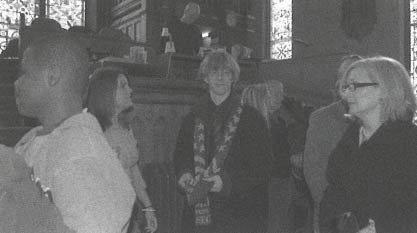
A Homecoming Weekend
LaSalle Street Church in downtown Chicago found this out as it planned its first-ever homecoming weekend this April. There was no question about who would be the ideal keynote speaker. Philip Yancey, a former LaSalle member who writes about the church in many bestselling books, agreed to speak. LaSalle decided to ask Yancey to lead its adult education hour, separate from worship, so as not to distract from worship, and to accommodate an audience for Yancey that would far exceed the 250 people the sanctuary can hold.
The adult education hour usually runs concurrent with LaSalle’s second Sunday morning service. But you can’t have a worship service competing with a Philip Yancey talk. So, LaSalle decided to combine worship and adult education for Yancey’s presentation, beginning with singing, prayer, and Scripture, and turning it over to Yancey for Bible study.
“There are a lot of logistical demands that are not typical,” says Gary Rand, seminary musician at McCormick Theological Seminary and LaSalle’s associate pastor of worship and arts. “The whole thing takes on a different feel.”
LaSalle’s plan for its late April event is to have a whole weekend of activities celebrating the history of the church, culminating in Sunday morning worship and Bible study.
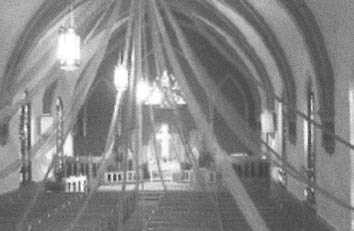
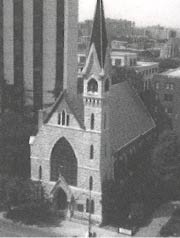
Looking Back to Look to the Future
The homecoming event will help kick off a capital campaign to support long-overdue renovations to the sanctuary, including handicap accessibility. But senior pastor Laura Truax says there is a deeper purpose to the celebration.
“We are the bearers of a legacy of the people who have come before us,” Truax says. Although LaSalle’s sanctuary stands just blocks away from Chicago’s Gold Coast, Truax says LaSalle’s founders and formative leaders have been “not the big-name people of Chicago . . . but the stonemasons, the bricklayers, the immigrants who were just getting started. . . . We’re worshiping in a space that was built by people who sacrificed to build it.”
And so the homecoming weekend is to draw upon LaSalle’s history as a way of looking to the future, with an “alumni choir” of former members directed by former director Omar Reese. The alumni choir will join the current choir for Sunday worship. A Saturday night drama will feature stories and monologues that trace the history of the church, including longtime pastor William H. Leslie, former youth director at Moody Church, who led the congregation from 1961 to 1989.
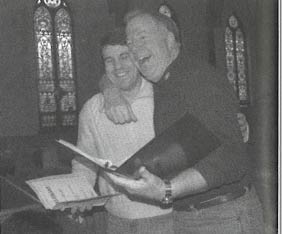
This gets to another tricky question in planning worship for celebrative occasions. How appropriate—how self-centered—is it to celebrate a specific institution during worship? Especially when one of the outcomes is a capital campaign? Truax says she sees the risk but observes that the biblical picture of God working through specific communities in certain times and places resonates during such occasions.
“I think there is a way that we can honor God and honor the gifts that people brought to the table at the same time,” Truax says. “When you read through the prophets, they are products of their unique giftedness. It’s their unique voice that God has gifted at that particular moment in time. . . . We have to be wise about how we craft that message, but I don’t want to downplay the particular voices that were used by God as particular vessels in a particular city.”
Rand concurs. “Christianity is a story of God working in people. The Old Testament is a story of God working in Israel,” he says. “In a way, when we worship, that’s what we’re doing; we’re telling the story of God’s work among people. And when we celebrate what’s gone on at LaSalle, that’s really no different. . . . All of it is a story of a people called by God to worship God and give their lives in service.”
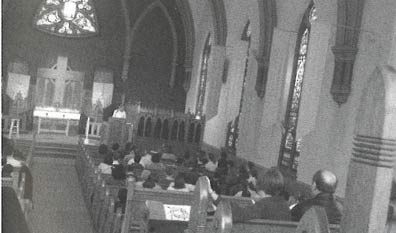
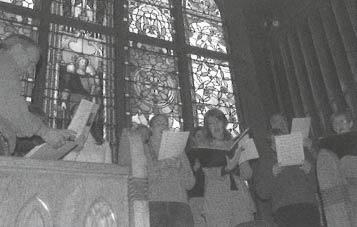
Worship with a Wide Vocabulary
Plans call for a “typical” service for homecoming weekend—but there’s really no such thing. Worship at LaSalle is organic and even eclectic, though with tell-tale traditional fixtures, as I experienced while attending LaSalle for several months. LaSalle prizes both structure and fluidity in worship; its worship statement calls planners to “keep the basic elements of worship from service to service in order to give security and freedom to the worshiper,” but continues, “However, the way each is done may vary from Sunday to Sunday in order to avoid triteness and ‘ritualism.’”
My wife and I found in LaSalle an ideal balance: worship was centered on the Word and followed an order of worship but was enlivened by Spirit-filled inventiveness.
Worship includes hymns, sacraments, and deeply theological preaching, but also involves a variety of musical instruments, selections from popular music, dramatic readings, and intricate artwork on the cover of the bulletin, accompanied by a quote from a religious author or popular figure that introduces the theme of the sermon. A visiting family member summed it up perfectly; worship at LaSalle, she said, engages “both head and heart.”
“There’s a strong liturgical foundation to worship,” Rand says. “Right across the street at the Anglican church [Church of the Ascension], they’re using the same form of worship, they just flesh it out a lot differently. . . . There has always been a lot of openness to trying some different things in worship. It’s a place with people who have a lot of imagination and creative gifts.”
“Bill Leslie had a line that gets quoted a lot, that said everyone needs to hear their own voice in worship,” Truax says. It’s no small task from a church in which three of four members have a college degree, but which is also attended by homeless and poor worshipers from the surrounding neighborhood.
I will never forget one wrenching Sunday morning service of lament in which members were invited up to give essentially “lament testimonies”—stories of sickness, depression, and doubt, many of which conspicuously lacked tidy, happy endings. That was followed by one member playing guitar and singing folk artist Rufus Wainwright’s plaintive song “Hallelujah” (“It’s a cold and it’s a broken Hallelujah”). I’d never heard that song played in worship before, but its psalm-like angst aptly underscored the pain and plaintiveness of the lament stories.
Rand is especially interested in expanding LaSalle’s range of cultural expression in worship. “My motivation is simply to widen our experience of faith, give us a wider vocabulary to express our faith, and help us have an expressive language adequate to the ranges of simplicity and complexity, lament and praise, physicality and quiet that we experience as Christians,” Rand says. “My motivation is also to give us some fluency with the cultural languages, first of all of our neighborhood, but also of the world at large.”
This balance is fitting for a church that was founded (in the 1880s) as Evangelical Lutheran, then purchased (in 1936) by nearby Moody Church and called “LaSalle Bible Church” before striking out on its own in the early 1970s. In the pews is The Covenant Hymnal of the Evangelical Covenant Church (whose core self-descriptions from its website are “Evangelical, but not exclusive; Biblical, but not doctrinaire; Traditional, but not rigid; Congregational, but not independent”), but supplemental printouts are used for other anthems and songs. LaSalle’s “Theological Foundations” statement posits Reformed views of the Trinity and the sovereignty of God and affirms the Apostles’ Creed, but recommends “for study and meditation” statements of faith from a variety of traditions, including the Nicene and Chalcedonian creeds, the Augsburg and Westminster confessions, and the Anglican Church’s 39 Articles of Religion. LaSalle celebrates the Lord’s Supper twice monthly, and weekly during Lent.
From a loosely-structured, as-the-Spirit-moves style of worship in the 1960s, longtime members say, worship has become considerably more structured and formal but remains personal. The church’s fervent spirit of worship and ministry is embodied by the charismatic Truax, who was installed as LaSalle’s senior pastor in 2004. Truax’s palpable empathy and emotion in the pulpit, in addition to her skill in unwrapping a text, shows the fusion of “head and heart” that characterizes the church as a whole. Church leaders and members say it’s simply Truax’s personality that draws both members and new attenders alike and sets the tone for worship.
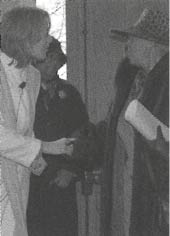
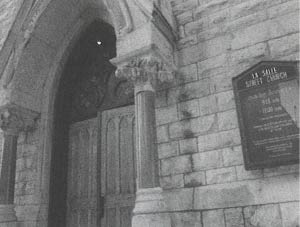
Worship Connections to Ministry
Ever since its new emphasis on social justice under Leslie, LaSalle has developed a comprehensive network of affiliated ministry programs that require an additional building, Cornerstone Center, on Wells Street just behind the church.
The church supports seven ministry directors of these programs, which include the Breaking Bread food ministry for the homeless, the Cabrini-Green Legal Aid Clinic that provides pro bono legal help for the poor, and the Cornerstone Counseling Center, which offers psychological counseling for those who can’t otherwise afford it.
“The language I use repeatedly is that we are a porous church, one that offers all sorts of front doors for people to come in and have an encounter with God, because that’s where transformation comes,” Truax says.
These ministries are drawn into worship each month when one of the program directors gives a “Minute for Ministry” and Truax leads a prayer as the congregation extends its arms toward the director in blessing. Truax says the connection between worship and ministry has become more deliberate since LaSalle received a Worship Renewal Grant from the Calvin Institute of Christian Worship in 2001.
“Since this grant, when we really started putting more emphasis on worship, worship has been seen as being the catalyst of everything that follows,” Truax says. “If you’re a social justice church, results can be what drives you, expediency can be what drives you. You can be so focused on programs, you forget that they’re not driven by altruism, but by a heart that’s been transformed by God’s love.”
“In the last few years,” she continues, “I think we’ve gone back to a real emphasis on worship as the root, the compelling force that sends us out into the world. It’s not just thinking, ‘We have to do something about this.’ It’s this transformation of love, this grace that you’ve experienced, that compels you out there, and that keeps you returning to the source.”

